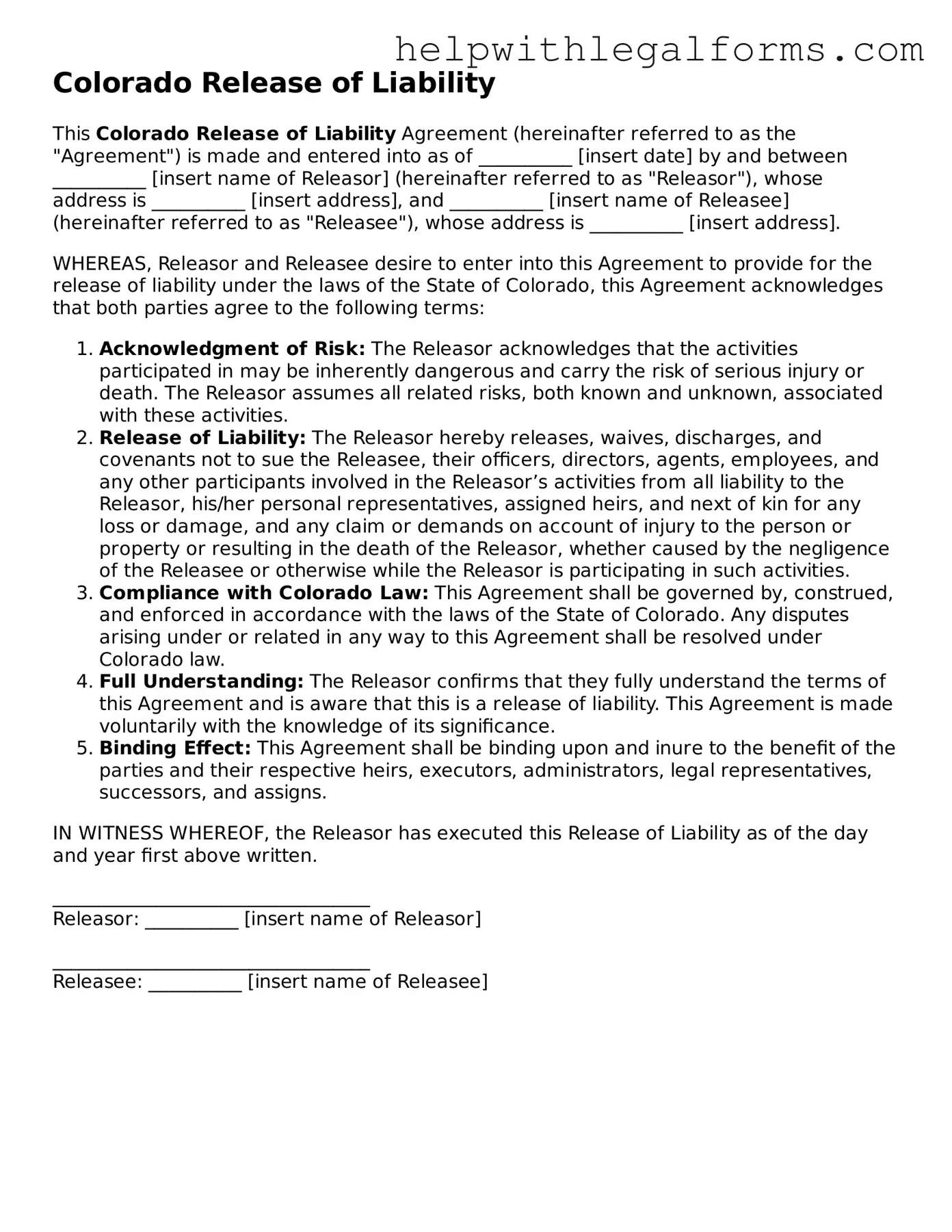What is a Colorado Release of Liability form?
A Colorado Release of Liability form is a legal document that a person signs to waive their right to sue another party involved in an activity. It's commonly used in situations where there's a risk of injury or damage, releasing one party from legal claims if something goes wrong. For example, you might sign this form before participating in a sports event, adventure activity, or using a service.
When should a Colorado Release of Liability form be used?
It should be used whenever there's potential for personal injury or property damage in activities like sports, recreational events, or services that pose inherent risks. Businesses or individuals offering these activities often require participants to sign this form to protect themselves from liability.
Is a Release of Liability form legally binding in Colorado?
Yes, it is legally binding in Colorado, provided it meets all requirements and is signed voluntarily by a competent party. The document must clearly state the risks involved and the rights being waived for it to be enforceable.
Can a minor sign a Release of Liability in Colorado?
No, minors cannot legally sign a Release of Liability form in Colorado. A parent or legal guardian must sign on their behalf. It's important for the signing party to have the legal authority to waive rights for the minor.
What information is required on a Colorado Release of Liability form?
The form should include the names and contact information of the party being released and the party signing the form. A detailed description of the activity and the specific risks involved should be clearly stated. Additionally, the form must have a clause that indicates the signer is releasing the other party from liability.
Can a Colorado Release of Liability form be revoked?
Once signed, it's challenging to revoke a Release of Liability form. However, if it was signed under duress, with misinformation, or by someone not legally competent to sign, it might be contested in court.
Are there activities where a Release of Liability cannot be enforced in Colorado?
Yes, there are exceptions. A Release of Liability cannot be enforced when activities involve gross negligence or intentional acts that cause harm. Colorado law does not permit parties to waive liability for behavior that is knowingly harmful or recklessly indifferent to the safety of participants.
Do digital signatures on a Colorado Release of Liability form hold up in court?
Yes, Colorado recognizes digital signatures as legal and binding, so long as they meet state criteria under the Uniform Electronic Transactions Act. Be sure that the platform used for the digital signature is secure and verifies the signer's identity.
What happens if someone gets injured after signing a Colorado Release of Liability form?
If someone gets injured, having signed the form may limit their ability to sue the responsible party. However, cases of gross negligence or unlawful actions are exceptions. Each situation is unique, and it's advisable to consult with a legal professional for specific advice.
Should a witness or notary be present when signing a Release of Liability in Colorado?
While having a witness or notary is not a requirement for the form's enforceability, it can add an extra layer of validation. A witness or notary attests that the signature is valid and voluntarily given, which can be helpful if the document's validity is ever contested in court.
